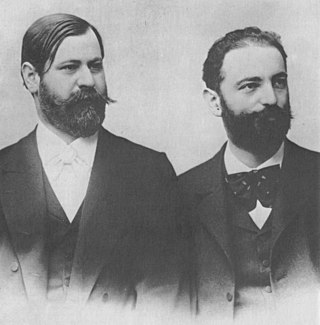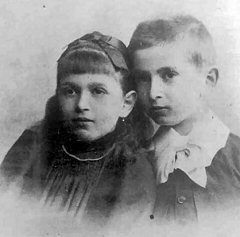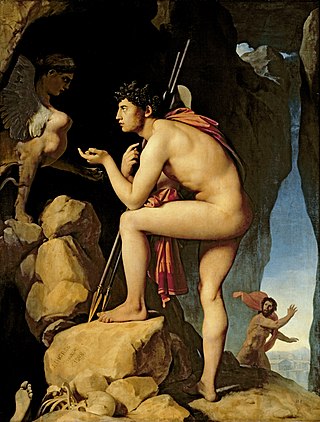Related Research Articles
Psychoanalysis is a set of theories and therapeutic techniques that deal in part with the unconscious mind, and which together form a method of treatment for mental disorders. The discipline was established in the early 1890s by Sigmund Freud, whose work stemmed partly from the clinical work of Josef Breuer and others. Freud developed and refined the theory and practice of psychoanalysis until his death in 1939. In an encyclopedic article, he identified the cornerstones of psychoanalysis as "the assumption that there are unconscious mental processes, the recognition of the theory of repression and resistance, the appreciation of the importance of sexuality and of the Oedipus complex." Freud's colleagues Alfred Adler and Carl Gustav Jung developed offshoots of psychoanalysis which they called individual psychology (Adler) and analytical psychology (Jung), although Freud himself wrote a number of criticisms of them and emphatically denied that they were forms of psychoanalysis. Psychoanalysis was later developed in different directions by neo-Freudian thinkers, such as Erich Fromm, Karen Horney, and Harry Stack Sullivan.

Sigmund Freud was an Austrian neurologist and the founder of psychoanalysis, a clinical method for evaluating and treating pathologies seen as originating from conflicts in the psyche, through dialogue between patient and psychoanalyst, and the distinctive theory of mind and human agency derived from it.

Jeffrey Moussaieff Masson is an American author. Masson is best known for his conclusions about Sigmund Freud and psychoanalysis. In his The Assault on Truth (1984), Masson argues that Freud may have abandoned his seduction theory because he feared that granting the truth of his female patients' claims would hinder the acceptance of his psychoanalytic methods. Masson is a veganism advocate and has written about animal rights.

Janet Clara Malcolm was an American writer, staff journalist at The New Yorker magazine, and collagist who fled antisemitic persecution in Nazi-occupied Prague just before it became impossible to escape. She was the author of Psychoanalysis: The Impossible Profession (1981), In the Freud Archives (1984), and The Journalist and the Murderer (1990). Malcolm wrote frequently about psychoanalysis and explored the relationship between journalist and subject. She was known for her prose style and for polarizing criticism of her profession, especially in her most contentious work, The Journalist and the Murderer, which has become a staple of journalism-school curricula.

Emma Eckstein (1865–1924) was an Austrian author. She was "one of Sigmund Freud's most important patients and, for a short period of time around 1897, became a psychoanalyst herself". She has been described as "the first woman analyst", who became "both colleague and patient" for Freud. As analyst, while working mainly in the area of sexual and social hygiene, she also explored how 'daydreams, those "parasitic plants", invaded the life of young girls'.
The genital stage in psychoanalysis is the term used by Sigmund Freud to describe the final stage of human psychosexual development. The individual develops a strong sexual interest in people outside of the family.

Wilhelm Fliess was a German otolaryngologist who practised in Berlin. He developed the pseudoscientific theory of human biorhythms and a possible nasogenital connection that have not been accepted by modern scientists. He is today best remembered for his close friendship and theoretical collaboration with Sigmund Freud, a controversial chapter in the history of psychoanalysis.
Sergei Konstantinovitch Pankejeff was a Russian aristocrat from Odesa, Russian Empire. Pankejeff is best known for being a patient of Sigmund Freud, who gave him the pseudonym of Wolf Man to protect his identity, after a dream Pankejeff had of a tree full of white wolves.

Dora is the pseudonym given by Sigmund Freud to a patient whom he diagnosed with hysteria, and treated for about eleven weeks in 1900. Her most manifest hysterical symptom was aphonia, or loss of voice. The patient's real name was Ida Bauer (1882–1945); her brother Otto Bauer was a leading member of the Austro-Marxist movement.

Franz Gabriel Alexander was a Hungarian-American psychoanalyst and physician, who is considered one of the founders of psychosomatic medicine and psychoanalytic criminology.

Freud's seduction theory was a hypothesis posited in the mid-1890s by Sigmund Freud that he believed provided the solution to the problem of the origins of hysteria and obsessional neurosis. According to the theory, a repressed memory of an early childhood sexual abuse or molestation experience was the essential precondition for hysterical or obsessional symptoms, with the addition of an active sexual experience up to the age of eight for the latter.
Peter Joffre Swales was a Welsh "guerilla historian of psychoanalysis and former assistant to the Rolling Stones". He called himself "the punk historian of psychoanalysis", and he is well known for his essays on Sigmund Freud. A 1998 article in The New York Times Magazine noted his "remarkable detective work over the last 25 years, revealing the true identities of several early patients of Freud's who had been known only by their pseudonyms." He is one of three men whose machinations are described in Janet Malcolm's 1984 book In the Freud Archives, which originated as two articles in The New Yorker magazine that provoked Masson to file an unsuccessful $10 million libel suit against the magazine and Malcolm.
The Freudian Cover-up is a theory introduced by social worker Florence Rush in 1971, which asserts that Sigmund Freud intentionally ignored evidence that his patients were victims of sexual abuse. The theory argues that in developing his theory of infant sexuality, he misinterpreted his patients' claim of sexual abuse as symptoms of repressed incestuous desire. Therefore, Freud claimed that children who reported sexual abuse by adults had either imagined or fantasized the experience.

In classical psychoanalytic theory, the Oedipus complex refers to a son's sexual attitude towards his mother and concomitant hostility toward his father, first formed during the phallic stage of psychosexual development. A daughter's attitude of desire for her father and hostility toward her mother is referred to as the feminine Oedipus complex. The general concept was considered by Sigmund Freud in The Interpretation of Dreams (1899), although the term itself was introduced in his paper A Special Type of Choice of Object made by Men (1910).
Wilhelm Robert Fliess was a German-American physician and psychoanalyst. He was the son of Wilhelm Fliess, a controversial otolaryngologist whose pseudoscientific theories influenced Sigmund Freud. He coined the term ambulatory psychosis. He wrote about sexual abuse and hinted that his father had abused him.

Why Freud Was Wrong: Sin, Science and Psychoanalysis is a book by Richard Webster, in which the author provides a critique of Sigmund Freud and psychoanalysis, and attempts to develop his own theory of human nature. Webster argues that Freud became a kind of Messiah and that psychoanalysis is a pseudoscience and a disguised continuation of the Judaeo-Christian tradition. Webster endorses Gilbert Ryle's arguments against mentalist philosophies in The Concept of Mind (1949), and criticizes many other authors for their treatment of Freud and psychoanalysis.

The Assault on Truth: Freud's Suppression of the Seduction Theory is a book by the former psychoanalyst Jeffrey Moussaieff Masson, in which the author argues that Sigmund Freud, the founder of psychoanalysis, deliberately suppressed his early hypothesis, known as the seduction theory, that hysteria is caused by sexual abuse during infancy, because he refused to believe that children are the victims of sexual violence and abuse within their own families. Masson reached this conclusion while he had access to several of Freud's unpublished letters as projects director of the Sigmund Freud Archives. The Assault on Truth was first published in 1984 by Farrar, Straus and Giroux; several revised editions have since been published.
The Aetiology of Hysteria is a paper by Sigmund Freud about the sexual abuse of children below the age of puberty and its possible causation of mental illness in adults. Presented in April or May 1896, it is where Freud first outlined his seduction theory.

The Life and Work of Sigmund Freud is a biography of Sigmund Freud, the founder of psychoanalysis, by the psychoanalyst Ernest Jones. The most famous and influential biography of Freud, the work was originally published in three volumes by Hogarth Press; a one-volume edition abridged by literary critics Lionel Trilling and Steven Marcus followed in 1961. When first published, The Life and Work of Sigmund Freud was acclaimed, and sales exceeded expectations. Although the biography has retained its status as a classic, Jones has been criticized for presenting an overly favorable image of Freud. Jones has also been criticized for being biased in his treatment of rival psychoanalysts such as Otto Rank and Sándor Ferenczi.
Kurt Robert Eissler was an Austrian psychoanalyst and a close associate and follower of Sigmund Freud.
References
- ↑ Sigmund Freud A Register of His Papers in the Sigmund Freud Collection in the Library of Congress Latest revision: 2006 November
- 1 2 3 4 5 6 7 8 9 10 Kurt Eissler, 90, Director of Sigmund Freud Archives by Sarah Boxer, The New York Times, February 20, 1999.
- ↑ Assault on Truth
- ↑ Eissler to Masson, p. 194 of Final Analysis
- ↑ "Freud Archives Research Chief Removed in Dispute Over Yale Talk" by Ralph Blumenthal, New York Times November 9, 1981
- ↑ Sigmund Freud Archives
- ↑ Photo
- 1 2 Sigmund Freud Archives